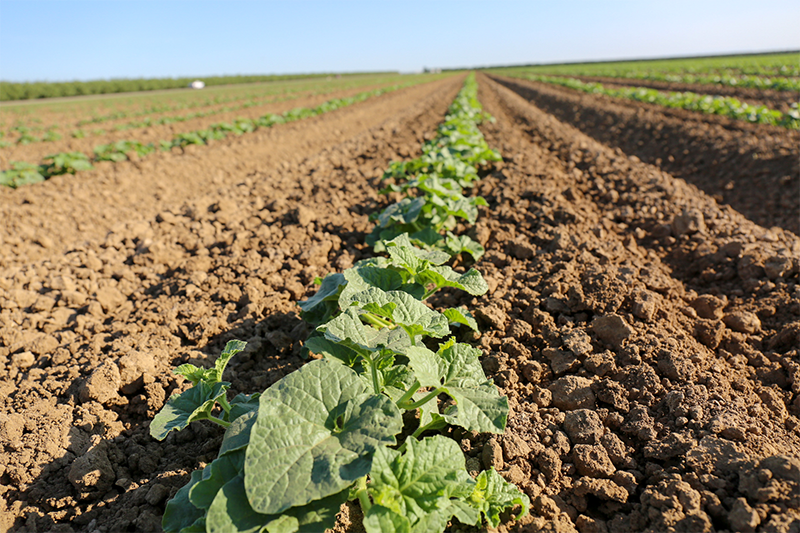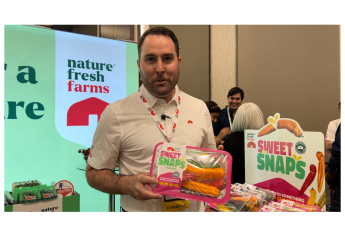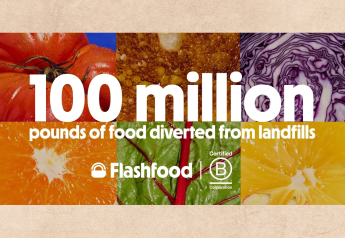Cantaloupe growers stitch together a steady supply through summer

Growing nearly three-quarters of America’s cantaloupe supply, California’s cantaloupe season is well underway, producing aromatic melons for shoppers to tuck into their carts and enjoy at summer picnics and gatherings across the U.S.
In terms of production, it’s the same song, different verse compared with other California crops coming out of fields in the first half of 2023. Echoing a "new normal" pattern experienced across fruit categories in the Golden State this year, growers have confirmed that California cantaloupes are lagging a bit behind schedule due to heavy winter rains and cool spring temperatures.
Despite these delays, growers are creatively filling supply gaps and triaging irregular production and yields by leveraging harvest from Yuma, Ariz., where the domestic season begins.
A cold, wet winter and spring
“We've obviously had a very cold, very wet winter in the West,” Garrett Patricio, chairman of the California Cantaloupe Advisory Board and president of Westside Produce, told The Packer. “We started with our plantings in Arizona in January, February and March. [The wet weather] has persisted into California and our plantings in March, April and May. Obviously, the wet weather has slowed the crop considerably.”
These factors mean that California cantaloupe producers are seeing both a shortage of supply, as well as uncharacteristically irregular planting, Patricio said.
Related news: Mexican melon markets to stabilize for peak summer promotions, forecasts grower
“We were probably a week to 10 days behind getting started in Arizona, which is where the bulk of our crop begins and includes the Imperial Valley of California,” he said.

Growers have experienced a chaotic marketplace in part because these supply changes are impacting market conditions quickly, he continued.
“But on the growing side, it's been favorable pricewise. Irregular weather typically brings irregular germination, rain and irregular crops. You tend to get lighter yields when you have periods of chaotic weather too,” Patricio said. “It all plays hand in hand. The produce supply chain is one that can be very volatile, and supplies aren't static; they’re not widgets.”
One of the downstream challenges resulting from the irregular weather is that the melons are at times not the right size, not the right shape or not the right color for the specific time in which they are needed. Despite this, growers do the best they can to fill in the gaps, Patricio said.
Troubleshooting gaps as the season moves north
As the California cantaloupe season migrates from Yuma, Ariz., the Imperial Valley and Southern Desert area to the San Joaquin Valley, growers stitch together a steady supply to meet melon demand.
“Overall, I would say that we have typical or normal acres planted both in the desert regions of Imperial Valley and Arizona. We also have pretty regular plantings in Central California and Northern California as the deal shifts in July, August and September,” he said.
“The normal spring domestic season starts in mid-May and we're about a week off the normal summer supply in California, which starts right around the first of July,” said Patricio. “I anticipate we'll see a gap sometime in early July as well. It’ll be light production in the first weeks of July, but by the middle of July, everything should normalize as far as what I'm seeing and what we're feeling.”
Compared with 2022 production, cantaloupe crops are likely five to 10 days later than last year, he continued.
Related news: Ripe or not? Solving the perfect melon puzzle
“Because of the erratic spring weather, we'll see some supply still coming out of the Arizona and Imperial growing areas through the first until the middle of July. So, I'm not I'm not sure we'll see big wholesale gaps or holes but there will be some, without a doubt.”
“Flooding is a big issue in the national news but in terms of cantaloupe growing regions, flooding doesn't seem to be a problem,” said Patricio. “It's not like we're dealing with issues related to flooding. There are some areas where you might normally plant melons, vegetable crops or other crops that you're not planting because the ground is not available either because it was too wet, or it was in a flood zone.”
When it comes down to acres planted, Patricio believes supply has normalized throughout the melon industry, across the board.
“There's been a downward trend in terms of total acres and total production, but it's kind of got us to a good place as growers because… yield obviously plays a big role in whether or not you can make profit,” he said. “You might be slightly off in terms of total yield, but overall, the prices make things normal, if you will.”







